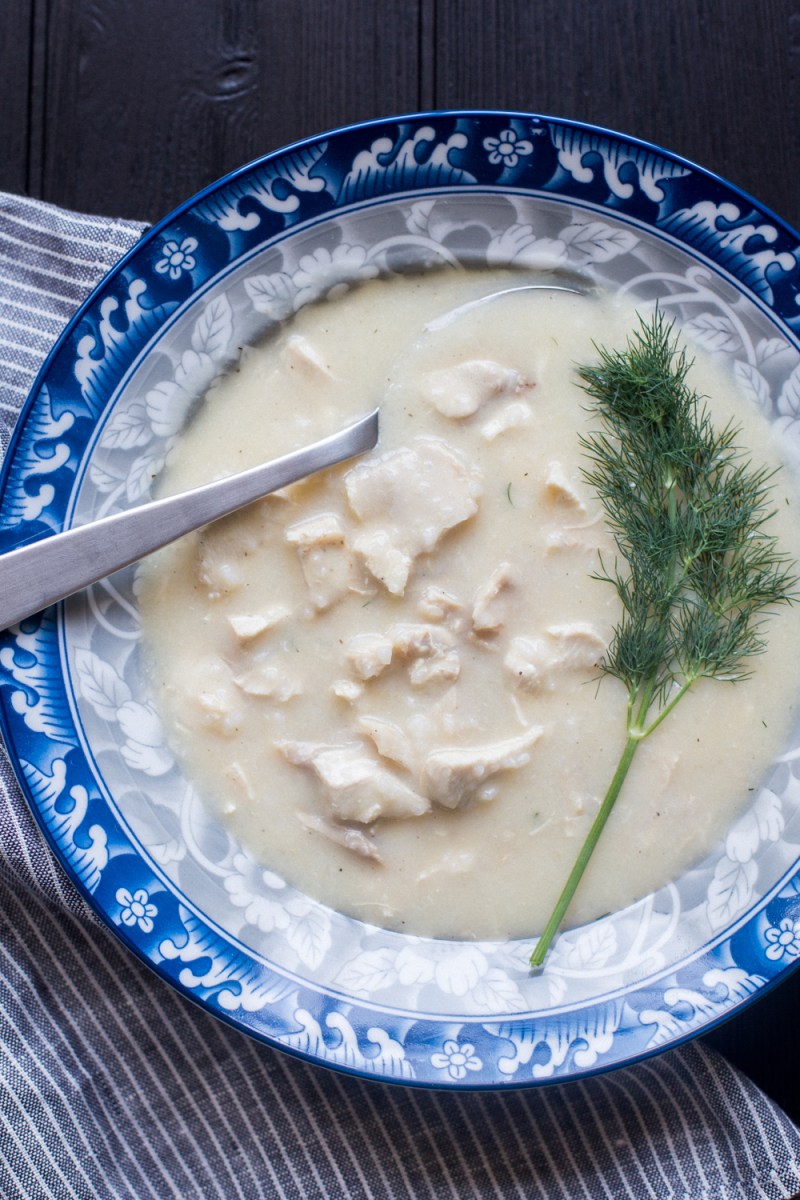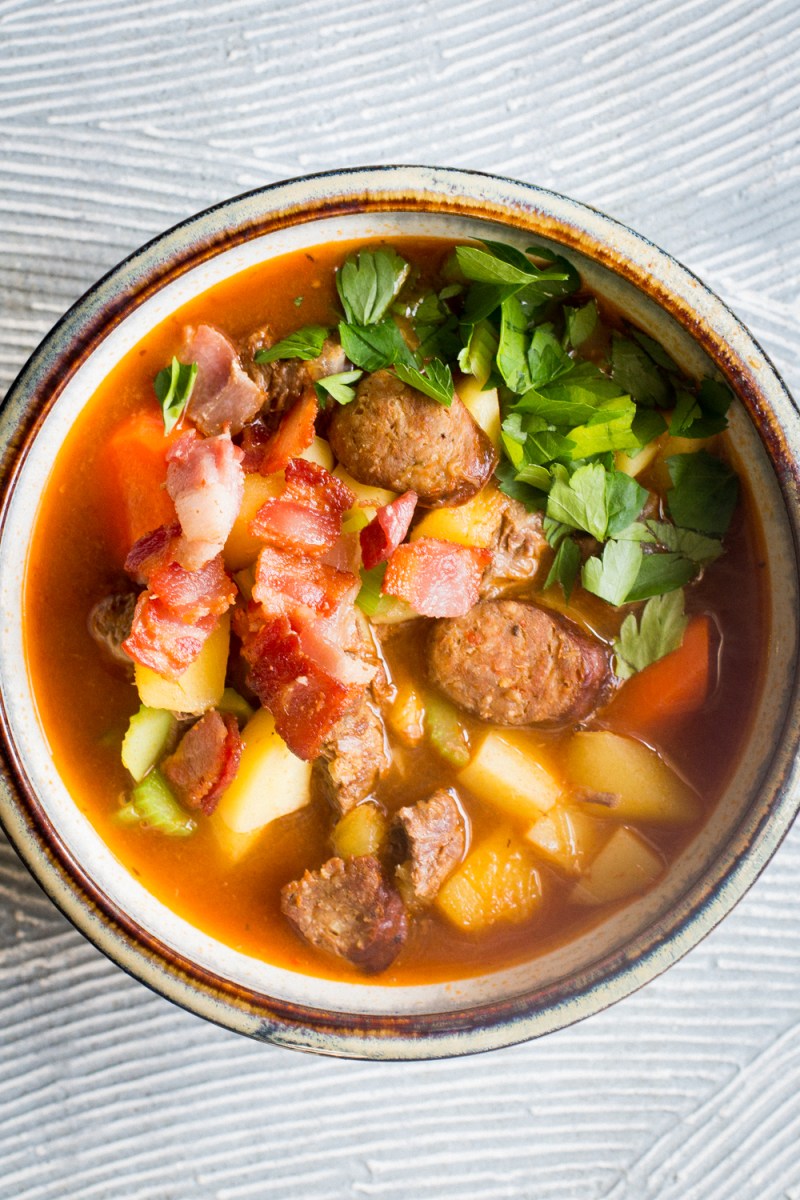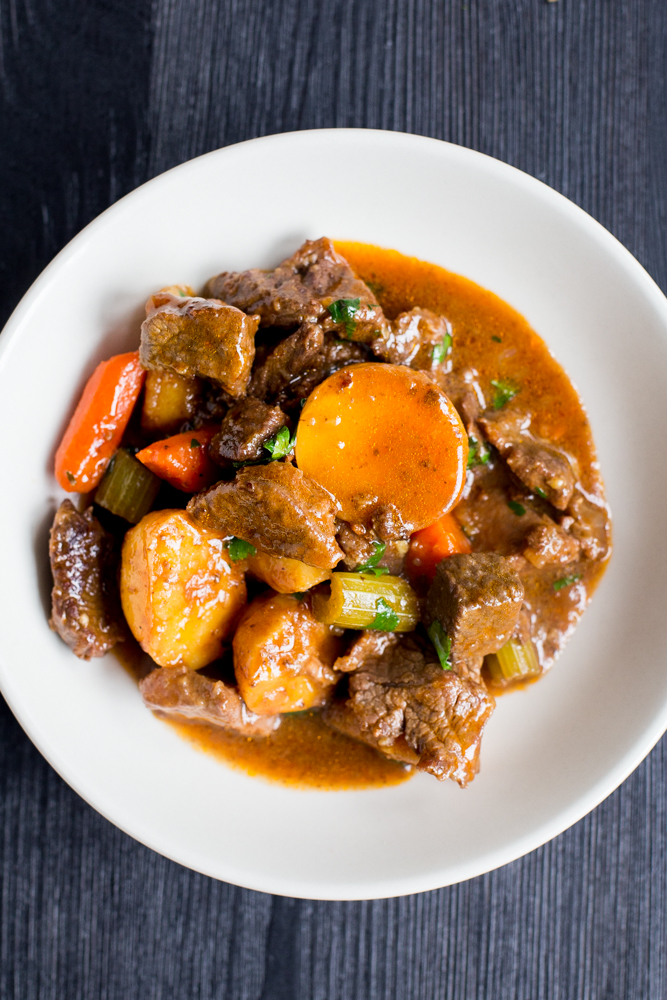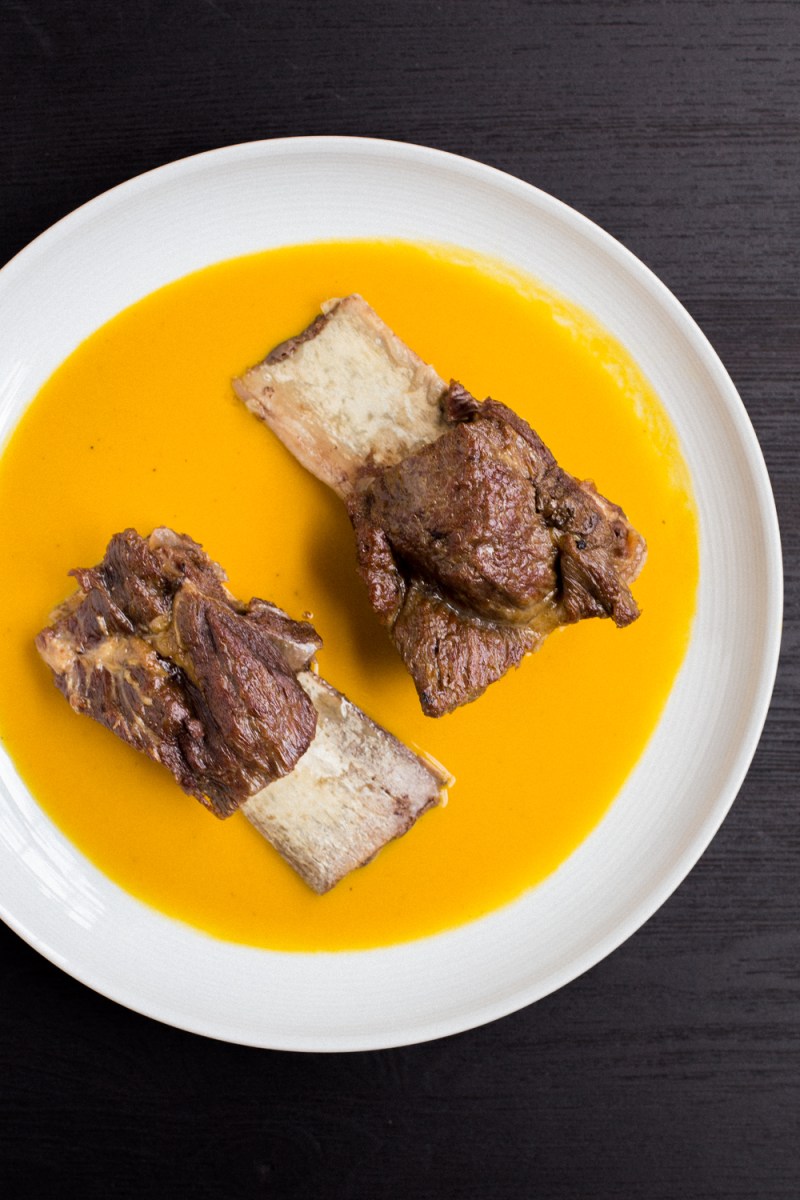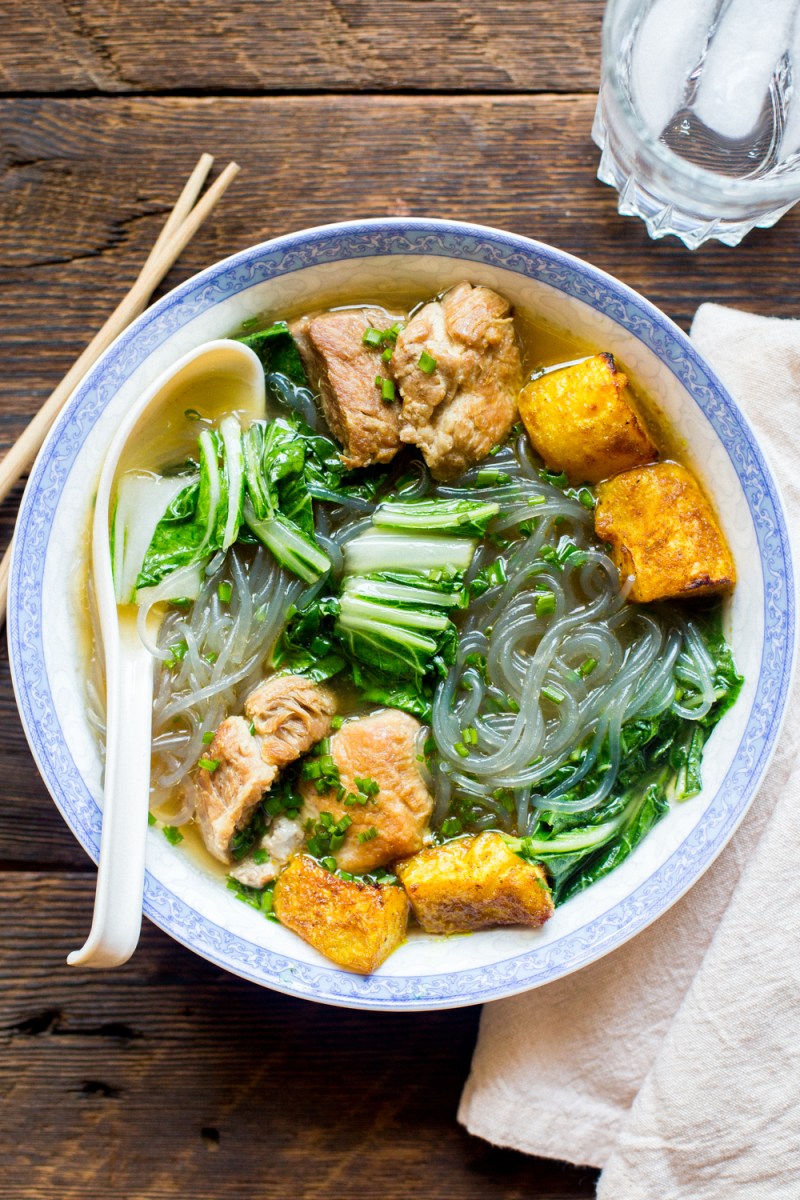
A favorite dish from Paleo Takeout is my Ramen recipe (page 112), which contains eight different types of Ramen and a variety of add-ins. It’s an excellent way to enjoy different takes on the same soup, while sneaking in a good amount of broth at the same time.
Like a lot of North America, we’re receiving a ton of rain right now, which always puts me in the mood for soup (admittedly, it doesn’t take much for me to get in a soup-eating mood). I figure some of you might be interested in soup right about now too, so here is my take on a simple pork-based Ramen, with some added curried winter squash to celebrate the coming winter season. Both pressure cooker and stovetop instructions are provided.
Ramen is a Japanese noodle dish inspired by Chinese cuisine (the word Ramen itself is borrowed from Lāmiàn, a type of Chinese noodle). Ramen is a relatively new phenomenon; it first started appearing in Japan during the early 20th century, but quickly gained ground after World War II, when soldiers returning from war in China had developed an affinity for Chinese-inspired cuisine (namely noodle soups). At the same time, Japan started importing American-grown wheat flour, which spurred the Japanese noodle-making industry. Ramen’s popularity was secured in 1958 when instant ramen noodles were invented, and later exported starting in 1971.
The impressive reach of Japanese Ramen can be neatly summarized by one fact: it has become very popular in China, where it is called Rìshì Lāmiàn (“Japan-style Lāmiàn”). That the soup can originate in one country, gain prominence in another, only to return to the original country with a new identity is both a testament to how delicious this soup is, as well as the ingenuity and adaptability of the human spirit.


